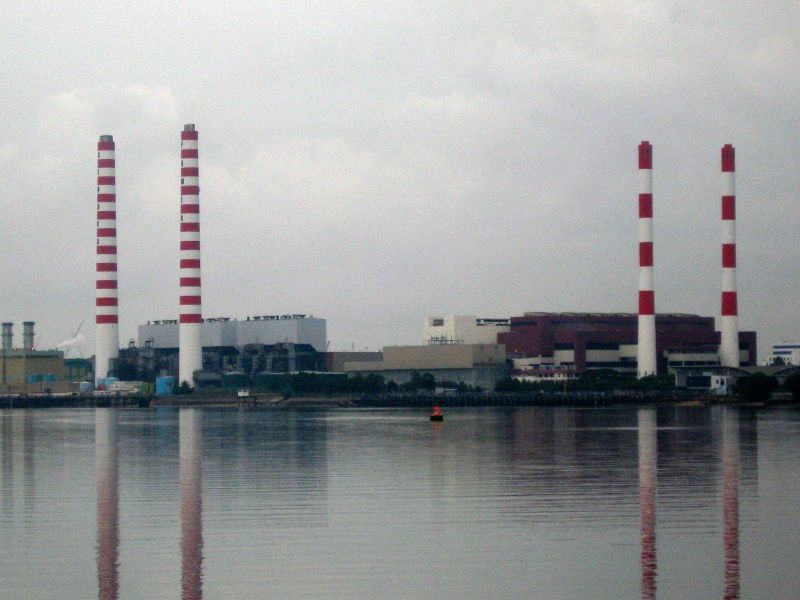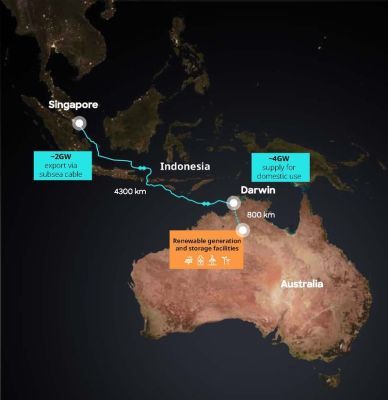

Recently Singapore’s Energy Market Authority (EMA) granted Sun Cable conditional approval for its transmission line with Australia. Singapore has been faced for years now with the dilemma that its population’s energy needs keep increasing year-over-year, while it has very little space to build out its energy-producing infrastructure, least of all renewables with their massive footprints. This has left Singapore virtually completely dependent on natural gas-burning thermal plants.
With no nearby countries to obtain excess power from as is common in e.g. the EU’s integrated energy market, an idea was floated in 2020 by Australian company Sun Cable for the project, called the Australia-Asia Power Link (AAPL). This would entail two transmission lines:
- the 800 km long DarwinLink to a yet-to-be-built multi-GW, 12,400 hectares solar farm in the Barkly Region of the Northern Territory. This link would be rated for 4 GW of transmission capacity.
- the 4300 km long SingaporeLink HVDC line from Darwin to Singapore, rated for 2 GW (1.75 GW after losses).
Back in 2023 Sun Cable went into voluntary administration after the two billionaires providing venture capital for Sun Cable had disagreements about the company’s ‘funding and direction’. It’s unknown in how far these issues are resolved, even as Singapore’s EMA seems to have given conditional approval to the SingaporeLink transmission line. This comes against the background of Singapore having signed a 30-year nuclear power deal with the US and is exploring the eventual deployment of nuclear power as well as the importing of large quantities of ammonia and (green) hydrogen.
The current planning for the whole Sun Cable project is set for completion by 2035, with construction yet to begin on all three components. There are still many uncertainties to be resolved, as the 1.75 GW that would be provided 24/7 to Singapore would have to be backed up by significant grid-level storage on both sides, which is not an easy problem to solve.
If completed, it would be the world’s longest electricity transmission line, providing enough power for ~9% of Singapore’s 2024 energy needs, and likely far below that by 2035. Naturally, all of these projections are eerily reminiscent of the EU’s continuously revived plans to import solar power and hydrogen from Africa.
Featured image: Senoko natural gas and oil-fired power station, Singapore in 2007. (Credit: Terence Ong)
No comments:
Post a Comment